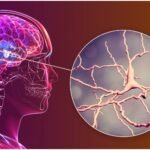In a world fraught with uncertainties, one thing remains constant: the need for individuals with lifesaving skills. While the term “first aid school” might conjure images of sterile classrooms and mannequins, it represents a gateway to a compassionate calling. The expansive realm of lifesaving education highlights the vital role it plays in preparing individuals to respond to emergencies effectively.
The Purpose of Lifesaving Education
At its core, lifesaving education exists to empower individuals with the knowledge and skills needed to provide immediate assistance during crises. It transcends mere classroom instruction, nurturing a sense of responsibility and compassion for others.
Comprehensive Training Programs
Emergency training centres offer comprehensive training programs that cover a wide range of emergency situations. These programs equip individuals with the ability to assess injuries, perform cardiopulmonary resuscitation (CPR), manage wounds, and administer basic life support. They also emphasise the significance of staying composed in high-stress situations, a factor that can profoundly impact the result of an emergency.
The Importance of Practical Experience
Theory alone cannot adequately prepare someone to handle real-life emergencies. Lifesaving education recognises this fact and incorporates practical exercises to reinforce theoretical knowledge. Students engage in hands-on activities, such as practising bandaging techniques, immobilising fractures, and using automated external defibrillators (AEDs). These practical experiences instil confidence and ensure that individuals can respond effectively when it matters most.
Becoming a Lifesaving Educator
Some individuals find themselves drawn to the world of lifesaving education as a lifelong vocation. Becoming a certified instructor at an emergency training school allows them to pass on their knowledge and skills to others. These instructors play a pivotal role in shaping the future of emergency responders, instilling in their students a sense of duty and the ability to act decisively under pressure.
Community Impact
Lifesaving education extends beyond individuals; it has a profound impact on communities as well. As a greater number of individuals receive training in first aid, it enhances the overall safety and well-being of the community. Prompt and effective response to emergencies can mean the difference between life and death, and a well-prepared community is a resilient one.
Specialised Training
In addition to basic first aid and CPR training, many emergency training schools offer specialised courses to cater to specific needs. These courses might encompass paediatric first aid, wilderness survival first aid, and advanced cardiac life support (ACLS). Such specialised training ensures that individuals are prepared for a wide range of scenarios, from caring for injured children to providing aid in remote outdoor settings.
Continuous Learning and Certification
The world of lifesaving education is dynamic and ever-evolving. Techniques and protocols change, and new technologies emerge. As such, ongoing education and recertification are crucial for maintaining proficiency. These schools often offer refresher courses to ensure that individuals stay up-to-date with the latest best practices and guidelines.
A Compassionate Community
Beyond the technical aspects of lifesaving education, there is an underlying theme of compassion that runs through it. Those who are drawn to this field are often motivated by a deep desire to help others. They understand that in times of crisis, every second counts, and their knowledge and skills can make a significant difference in someone’s life.
Conclusion
In conclusion, first aid school are more than just institutions for teaching basic medical techniques; they are hubs of compassion and preparedness. Lifesaving education equips individuals with the knowledge and skills to respond effectively to emergencies, making them invaluable members of their communities. Whether it’s a simple act like administering CPR or providing aid in a wilderness setting, the impact of this education is immeasurable. It’s a calling that transcends the classroom, fostering a sense of responsibility and empathy that can last a lifetime. As long as there are individuals willing to answer this compassionate calling, the world will be a safer and more caring place for all.








